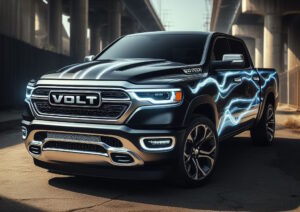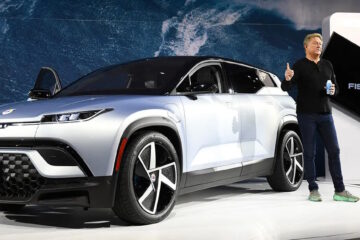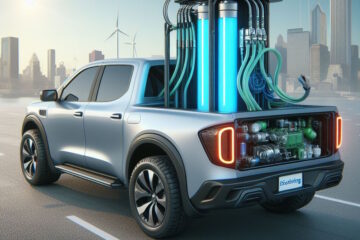In a recent interview on Autoline After Hours, the head of Stellantis’ (Chrysler, Jeep, RAM, Dodge, Fiat, Pugeot, Citroen, Lancia, Opel…) propulsion systems, Mickey Bly, explains that forthcoming 2025 RAM Charger EV Pickup Truck concept came from the Chevy Volt program.

MICKEY BLY: So there’s other concepts out there we’re not the first do a range extender but I think this is gonna really really change the discussion around what a truck EV is…
…earlier in the interview…
INTERVIEWER: …you mentioned earlier in your career (when you were) in the Chevy Volt (2006-2008) but that that was slightly different than this.
MICKEY BLY: A little bit different. Similar concept. Uh you know, we could have a a lever diagram of how the transmission hooks up or doesn’t hook up inside of that one but it’s very similar.
…(the Volt) had a much smaller battery only 16 kWh, battery this thing’s going to have over 80 kilowatt hours of battery…
He went on to explain the advantages of the Chevrolet Volt Range Extender concept:
Officially about electric system so if you want to be electric EV driver 99% of your time most of our RAM urban drivers are not long trips they’re not towing they’re not going wherever they where they need very long range so you’re going to be electric all the time.
So you can do that and those that want to tow they can tow without worrying about it so rundown electric battery keep going over 600. I think we’ve said (the RAM Charger Pickup Truck EV with have) about 680 miles 290 miles total range, which is electric and gas.
What is a EV Range Extender?
The concept of a range extender for an electric vehicle is quite simply, a traditional electric vehicle drivetrain with the addition of a gasoline engine that only produces electricity and never powers the wheels.
In real world production the Chevy Volt PHEV and the RAM Charger 1500 pickup truck EV are configured so that under extreme conditions they can power the wheels directly. Rare situations like, passing another vehicle while towing a heavy load up a hill may require extra power that the gasoline engine is able to provide directly to the wheels.
MICKEY BLY: We want to make sure that we have flexibility that’s how our whole strategy has been rolled out of a flexible solution. … (A) very simple range extender you have an engine that normally is hooked up to a transmission gears shaft, comes outside of it, goes to the wheels through an axle setup.
A range extender is a very simple. Take a gas engine and on the back of it instead of a transmission, you put in generator. You mount a generator on it just like you have a Gen. set as a backup generator at home.
You know, when you run out of power, what do? You do you crank the engine cranks up in a little brown box outside and the generator generates electricity.
So we have an engine, a generator in the back, and nothing else. Normally it’s running as a fully electric vehicle. You have a battery and you have electric motors on both axles, which we will have on the RAMcharger, so now we’ll drive from 4 wheel drive system. And 160, 180 miles of electric range, which ton of customers will be fine with it that kind of arrange in their truck.
If you happen to not charge it or you don’t want to drive up north as soon as that that battery runs down, we fire up the engine running on gas tank and that gas tank is is running the engine, (which) creates electricity and you can either keep driving down the road or you can actually charge the battery back up, never having to plug it in if you don’t want to. You ca,n you don’t have to plug it in. that’s a range extender we have set up (in the RAM Charger).
FUN FACT: One of the things Chevy learned during their early testing in the Volt program, was a vehicle can avoid the convertion losses (engine to battery, then battery to electric motor) by sending the electricity produced by the gasoline generator, directly to the electric drive motors, and have only surplus energy get stored in the battery. This means when the gas generator is running, the electricity for the vehicles propulsion is not coming from the battery.



0 Comments